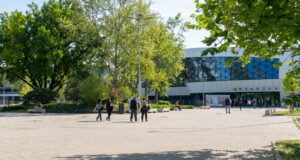Sharbat Gula, Afghan Girl, at Nasir Bagh refugee camp near Peshawar, Pakistan, 1984.
MAX PRINT SIZE: 40×60
Sharbat Gula, the Afghan Girl, at Nasir Bagh refugee camp near
Peshawar, Pakistan, 1984
-Untold (pg. 81)
National Geographic Magazine, Vol. 167, No. 6, June 1985, Along Afghanistan’s War-torn Frontier.
“The green-eyed Afghan girl became a symbol in the late twentieth century of strength in the face of hardship. Her tattered robe and dirt-smudged face have summoned compassion from around the world; and her beauty has been unforgettable. The clear, strong green of her eyes encouraged a bridge between her world and the West. And likely more than any other image, hers has served as an international emblem for the difficult era and a troubled nation.” – Phaidon 55
The iconic image does not stand outside of time. Rather, it connects with the moment in a deeply profound way. Such as images are imbued with meaning, a significance that resonates deeply with a wide and diverse audience. McCurry’s photograph of the Afghan girl is one such image. For many, this beautiful girl dressed in a ragged robe became a worldwide symbol for a nation in a state of collapse.
Haunted eyes tell of an aAfghan refugee’s fears.
—
Bannon, Anthony. (2005). Steve McCurry. New York: Phaidon Press Inc., 12.
NYC5958, MCS1985002 K035
Afghan Girl: Found
National Geographic, April 2002
Phaidon, Iconic Images, final book_iconic, page 33.
National Geographic Magazine, Along Afghanistan’s War-torn Frontier, June 1985, Vol. 167, No. 6
South Southeast_Book
In the Shadow of Mountains_Book
Steve Mccurry_Book
Looking East_Book
Iconic_Book
Untold_book
PORTRAITS_APP
final print_MACRO
final print_Sao Paulo
final print_Milan
final print_Birmingham
Fine Art Print
final print_HERMITAGE
final print_Zurich
final print_Ankara
Retouched_ Sonny Fabbri 03/04/2015
 Amdala.hu Amdala Magazin és Hírportál. Friss hírek, bulvár, sport, kultúra.
Amdala.hu Amdala Magazin és Hírportál. Friss hírek, bulvár, sport, kultúra.


